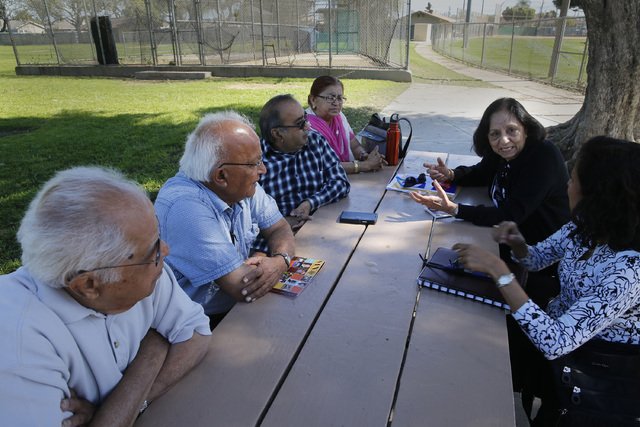LOS ANGELES — The patients filing into Dr. Ronesh Sinha’s clinic in Redwood City, California, were like nothing he had ever seen. ADVERTISING LOS ANGELES — The patients filing into Dr. Ronesh Sinha’s clinic in Redwood City, California, were like
LOS ANGELES — The patients filing into Dr. Ronesh Sinha’s clinic in Redwood City, California, were like nothing he had ever seen.
As a doctor in training, Sinha studied which patients were usually diagnosed with Type 2 diabetes: They were at least middle-aged, ate too much fast food, drank soda and didn’t exercise.
The Silicon Valley techies visiting his office were typically slender Asian-Americans in their 30s who worked out regularly and ate healthy meals. But, as Sinha repeatedly found, they either already had or were about to get diabetes.
“It was such a discordance from what I’d learned about in medical school,” Sinha said. “Maybe, I thought, this is just an anomaly.”
It wasn’t. What Sinha noticed a decade ago is now supported by a growing body of scientific research: Asians, in part for genetic reasons, are disproportionately likely to develop diabetes. They get the disease at younger ages and lower weights than others, experts say.
Diabetes, a condition in which blood sugar levels are higher than normal, often remains undiagnosed until it’s too late, especially in Asians who haven’t historically been considered high-risk. It’s the seventh most common cause of death nationwide and can lead to blindness, amputations and strokes.
To prevent the insidious disease from gaining ground among the country’s fastest-growing minority group, doctors and health advocates are trying to increase diabetes testing and treatment for Asian-Americans, including Chinese, Indians and Filipinos. Diabetes is largely preventable, experts say — but only if people know they are at risk.
“We began with diabetes is not a big problem in the Asian community” to now thinking “simply being Asian is a risk factor,” said Dr. Edward Chow, an internist who has worked in San Francisco’s Chinatown since the 1970s.
As Americans put on weight over the last two decades, diabetes rates more than doubled. Scientists have long known that obesity is closely linked to diabetes, but newer research shows the picture is more complicated.
In Los Angeles County, Asian-American adults have the lowest obesity rate of any ethnic group, at 9 percent, compared with 18 percent of whites and 29 percent of Latinos and blacks.
When physicians tell patients to eat less rice to prevent developing diabetes, many of them say “they would rather die,” Chan said.
Wendy Kim, 45, had to give up bagels and sushi with white rice after being diagnosed with diabetes more than 10 years ago. Even if she skips the rice that comes with Korean barbecue, the meat marinades contain sugar that she can’t gorge on.
“There are people who eat to live and there are people who live to eat. I live to eat,” says Kim, who lives in L.A.’s Koreatown. “I’m a foodie, and I can’t have noodles.”



